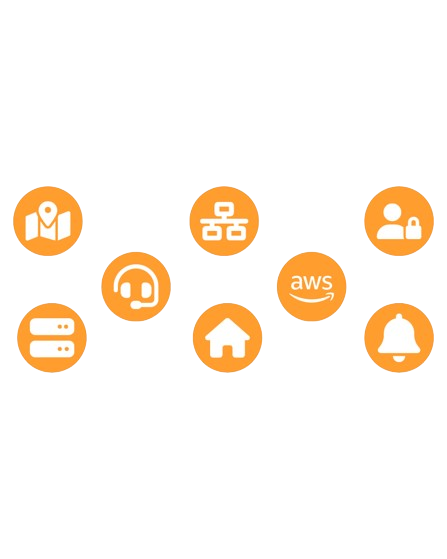November 20, 2023
Different Pricing Models Used by IT Companies
 As a small business owner, you know that IT services are an essential part of running your business. Whether it’s managing your network, setting up servers, or maintaining your hardware and software, you need reliable and cost-effective IT support. But with so many IT companies and managed service providers (MSPs) out there, it can be difficult to understand the different pricing models they offer.
As a small business owner, you know that IT services are an essential part of running your business. Whether it’s managing your network, setting up servers, or maintaining your hardware and software, you need reliable and cost-effective IT support. But with so many IT companies and managed service providers (MSPs) out there, it can be difficult to understand the different pricing models they offer.
Without understanding what you are getting your business into, you run the risk of cost overruns or underutilized budgets. The good news is that with a simple understanding of the options available, you can make the right decision for your business. Your IT investments should have a positive return on investment. Choosing the right pricing model for your situation will go a long way in maximizing that ROI.
In this blog post, we’ll take a look at the most common pricing models used by IT companies and help you understand which one is right for your business.
Different Pricing Models Offered By IT Companies
Hourly Rates
The hourly rate is the most common pricing model used by IT companies. In this model, the IT company charges you a fixed hourly rate for the time spent on your project or issue. Hourly rates can vary widely depending on the level of expertise required and the complexity of the project.
Hourly rates are suitable for businesses with one-off or occasional IT needs. For example, if you only need IT support for occasional issues or troubleshooting, hourly rates may be the best option. However, if your IT needs are more extensive and ongoing, an hourly rate can quickly become expensive and unpredictable.
Project-Based Pricing
Project-based pricing is another common pricing model used by IT companies. In this model, the IT company provides a fixed price for a specific project or set of projects. Project-based pricing is ideal for businesses with clearly defined IT needs, such as a network upgrade, software installation, or hardware replacement.
With project-based pricing, you know exactly what you’re paying upfront, and there are no surprises along the way. However, it’s essential to ensure that the project scope is clearly defined before signing any contracts to avoid any miscommunication or unexpected costs.
Managed IT Services (Fixed Price)
Managed IT services are a popular pricing model used by MSPs. In this model, the MSP provides ongoing IT support for a fixed monthly fee. Managed IT services typically include network monitoring, helpdesk support, software updates, security patches, and backup and disaster recovery services.
Managed IT services are ideal for small businesses that require ongoing IT support but don’t have the resources or expertise to manage their IT infrastructure in-house. With managed IT services, you pay a fixed monthly fee, which makes budgeting predictable and straightforward. Managed IT services also provide proactive monitoring, which helps to identify and fix issues before they become major problems.
Value-Based Pricing
Value-based pricing is a pricing model that is gaining popularity in the IT industry. In this model, the IT company charges based on the value they provide to the customer rather than the time spent on the project. Value-based pricing is ideal for businesses that require customized IT solutions, such as software development, cloud migration, or digital transformation.
Value-based pricing focuses on the value delivered to the customer rather than the price of the service. The IT company works closely with the customer to understand their unique needs and provides a solution that adds measurable value to the business. Value-based pricing ensures that the IT company and the customer are aligned in terms of goals and expectations.
Tiered Pricing
Another popular pricing model is tiered pricing, where IT companies offer different levels of service at different prices. Usually, they will offer a basic level of service, a mid-level service, and a premium level of service. The basic service will usually only include the basics such as helpdesk support, while the premium service may include more advanced features such as cybersecurity, cloud services, and more.
The tiered pricing model is great for businesses that have a limited budget but still need some level of IT support. They can choose the level of service that best fits their needs and budget. The downside to this model is that if a business needs a feature that is not included in their selected tier, they may have to pay extra for it. It is essential to read and understand the fine print before signing a contract.
Per User Pricing
Per user pricing is another popular pricing model that is widely used by IT companies. This model charges a flat fee for each user that will be using their services. This model is best suited for companies with a large number of employees or who want a more predictable monthly expense.
The per-user model typically includes all IT services such as helpdesk support, cybersecurity, cloud services, and more. The advantage of this model is that businesses can quickly calculate their IT expenses by counting the number of users they have. The downside is that it may not be suitable for businesses that have a fluctuating number of employees or who do not need all the services included in the package.
Project-Based Pricing
IT companies may also offer project-based pricing for businesses that need one-time projects or special services. The project-based pricing model is usually used for services such as setting up a new server, upgrading hardware, or installing software.
In this model, the IT company will provide a quote for the entire project, and the price will be fixed. The advantage of this model is that businesses can budget for the project without worrying about additional costs. The downside is that it may not be suitable for businesses that require ongoing IT support.
Hourly Billing
Another pricing model used by IT companies is hourly billing. In this model, the IT company charges the business for the number of hours worked. Hourly billing is commonly used for consulting services, troubleshooting, and other ad-hoc tasks.
The advantage of the hourly billing model is that it can be cost-effective for small businesses that only need occasional IT support. The downside is that it may not be predictable, and there is a risk of the bill increasing unexpectedly.
ProLink Systems Has the Right Pricing Model for You
Understanding the different pricing models used by IT companies and MSPs is crucial for small businesses to make informed decisions when selecting a partner. Businesses should evaluate their budget, needs, and goals carefully before choosing a pricing model. Whether it’s pay-per-user, pay-per-device, or a customized plan, it’s essential to choose a pricing model that aligns with your business’s requirements and budget.
At ProLink Systems, we offer flexible pricing options tailored to meet the specific needs of our clients. Our experience with small and midsized businesses across southern California means that we recognize every organization has different priorities, budgets, and needs. By being flexible, ProLink Systems serves businesses on their terms – not ours. Contact us today to learn more about how we can help your small business thrive with our IT services.
